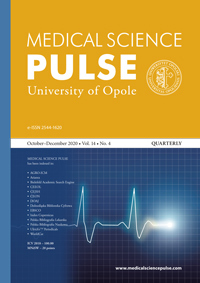The frequency of select adaptation disorders in preterm newborns.
The frequency of select adaptation disorders in preterm newborns.
Author(s): Lucyna Sochocka, Magdalena Wojtaszyn, Katarzyna SzwamelSubject(s): Health and medicine and law
Published by: Uniwersytet Opolski
Keywords: premature infant; newborn respiratory distress syndrome; neonatal jaundice; low birth weight
Summary/Abstract: Background: Preterm birth, defined as the birth of an infant before 37 complete weeks of gestation, is the single major cause of death and disability in children up to 5 years of age in the developed world. Aim of the study: The study aimed at analyzing select adaptation disorders in newborns delivered between 34–37 weeks of gestation and in particular, (1) determining the frequency of breathing, thermoregulatory, hypoglycemic and pathological hepatic disorders, and (2) examining underlying factors that determine their incidence. Material and methods: The study was carried out according to the documentoscopy on the basis of medical files collected between 2019–2020 at the Neonatal and Preterm Baby Unit in WS SPZOZ (the regional hospital) in Nowa Sól. The records of 102 preterm newborn patients were examined, which included the birth book, detailed newborn observation charts, fever charts and individual patient observation charts. Results: The most commonly diagnosed disorders included hepatitis (21.6%; 50) and thermoregulation disorders (20.3%; 47). Additionally, hypoglycemia and tachypnea were observed in every third child (31.4% and 29.4%, respectively) and almost every fourth newborn experienced some respiratory disorders (23.5%). Among the findings, maternal and gestational age were not found to be statistically significant with respect to an association with the incidence of the disorders examined in the study. However, hepatitis was more frequently diagnosed among naturally born children (64.5%) compared with those delivered by Cesarean (C) section (42.3%, p=0.039). Respiratory disorders were more often found in children delivered by C-section (21.1%) than in those born naturally (3.2%, p=0.022). Conclusions: Hepatitis and thermoregulatory disorders occurred most frequently in preterm infants of all the adaptation disorders examined. The type of delivery was quite determinant for some of the disorders. Hepatitis was found more often in naturally born babies than in those delivered by C-section, whereas respiratory problems occurred more frequently in children delivered by C-section compared with those delivered naturally. Mothers who wish to deliver their babies by C-section should be informed about potential complications associated with the occurrence of respiratory disorders. They can stem from the absorption of pulmonary liquid and inappropriate surfactant activity, which can lead to some serious abnormalities related to the improper exchange of respiratory gases.
Journal: Medical Science Pulse
- Issue Year: 14/2020
- Issue No: 4
- Page Range: 60-66
- Page Count: 7
- Language: English

